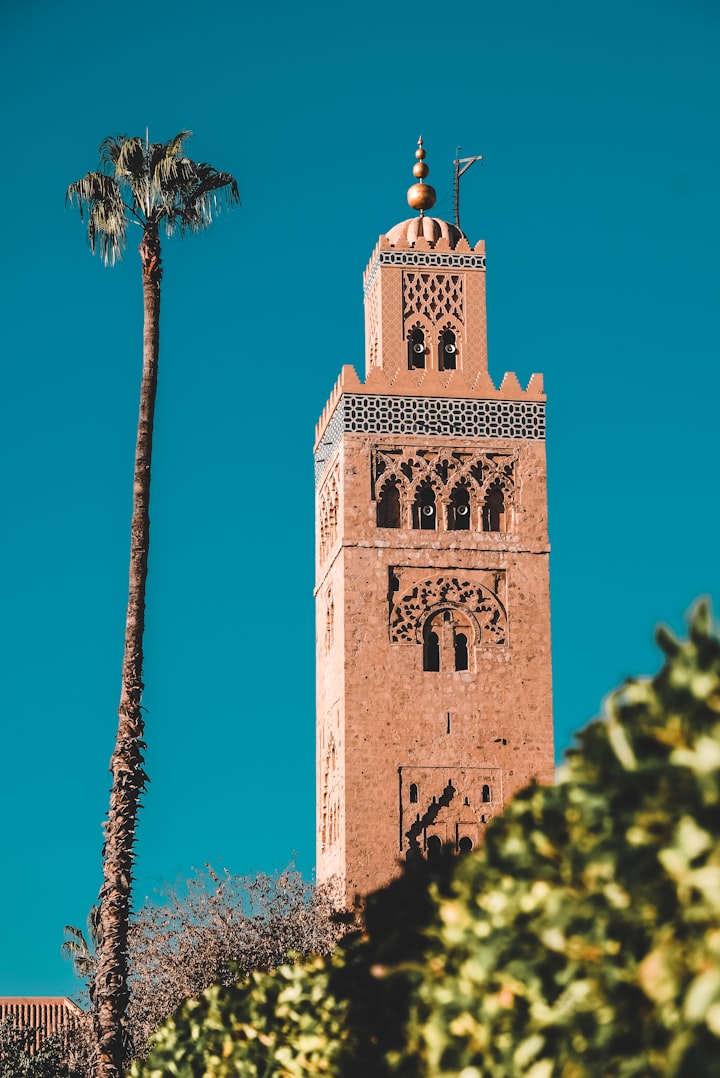Top things to do in Marrakech, Morocco.
Worthy sites to explore in Marrakech

Known for being one of the most beautiful Moroccan cities, Marrakech is located near the Djebel Toubkal, the highest mountain in Morocco with its 4165 meters, and for being the seat of the Marrakech Accords, which established the birth of the World Trade Organization. Marrakech is a unique city to visit as a couple, with friends or family, strolling through traditional markets, and discovering the mosques and the oldest monuments. Today the city of Marrakech has about 1,460,000 inhabitants, and is one of the main cities of Morocco. It is divided into three districts: Old Town, Medina and New Town. Among the main monuments not to be missed in Marrakech are: Kutubiya Mosque, Kasbah, Ben Youssef Mosque, Sa'didi Tombs, Royal Palace, Badi Palace.
This is your guide to Marrakech if you are travelling to Morocco soon:
Jemaa el Fna :
It is the most famous and characteristic place of the city of Marrakech, here are found every day, street artists, musicians, vendors, fortune tellers, herbalists and snake charmers to entertain the many tourists who flock to the square every day.
Djemaa el fna Square, whose name translated from Arabic literally means gathering of the dead, was born as a square of arms in front of the royal palace of the Almoravids Dar El Hajar but was originally used for public executions. When the Almohads came to the throne and moved their palace to the south of the city, the square became a place of meeting and commerce.
Due to its uniqueness, this square has been recognized as a UNESCO World Heritage Site.
Kutubiya Mosque :
The Kutubiya Mosque is the largest in Marrakech and is one of the finest examples of Almohad architecture - a dynasty that ruled over Morocco from 1147 to 1269. Construction of the mosque began around 1120, commissioned by Sultan Ali ibn Yusuf, but it was extensively remodeled about 40 years later by the Almohad caliphs, who made it one of the finest examples of Almohad architecture in the city. The minaret predates the construction of the mosque, is made entirely of Gueliz sandstone and follows the traditional square plan.
El Bahia Palace :
The Palais El Bahia is one of the most majestic examples of Moroccan architecture. The building was built between 1866 and 1867 in a strategic position, southeast of the old city of Marrakech - the Medina - , north of the Jewish Ghetto, and near the royal palace. The palace was the residence of Sultan Ahmad b. Musa, upon his death Morocco became a French protectorate and El Bahia Palace was transformed into the official residence of the resident general of France in Morocco and its officers. Today the palace hosts cultural events, art exhibitions and concerts.
Ben Youssef Madrasa:
The Ben Youssef Madrasa in Marrakech is a Koranic school dedicated to Emir Ali ibn Yusuf, of the Almoravid dynasty, who ruled the city from 1106 to 1142. This Madrasa is the largest in all of Morocco and was built in the 14th century at the behest of Sultan Abu I-Hassan. The building is characterized by the presence of an elegant courtyard with a central basin for ablutions, all around stucco decorations, the courtyard leads to 132 dormitory cells where students were housed. In front of the entrance portal, there is the Prayer Room, with three naves and precious decorations.
Sadidian Tombs :
The Sadidian Tombs are the mausoleum of the members of the Sa'didian dynasty who ruled over Marrakech and Morocco from 1509 to 1659. Discovered only in 1917 these tombs are now one of the most valuable attractions of the Moroccan city, inside the mausoleum were in fact buried over 60 members of the Sa'didiana dynasty. Particularly interesting is the room of the twelve columns, where there is the tomb of the grandson of Sultan Ahmad al-Mansur al Dhahabi. All the monuments and sculptures, are made of Carrara marble.
Majorelle Gardens :
It is a series of botanical gardens designed in 1931 by French artist Jaques Majorelle. The gardens were created by taking inspiration from the traditional Moroccan ones, in one of these gardens the artist also built a villa. After Majorelle's death, occurred in 1962, the gardens were abandoned until, in 1980, they were bought by Yves Saint Laurent and Pierre Bergè and since 2011 in the villa has been set up the Berber Museum. The gardens are home to various types of plants, cacti, bananas, aloes, palms and bamboo and are the natural habitat of various species of birds, in particular bulbul, blackbird, sparrow, robin, titmouse, white ballerina, redstart, and Emberiza Striolata.
City walls :
The construction of the walls of Marrakech dates back to 1120, when Sultan Ali Ben Youssef fortified the city to defend it from Almohad attacks. The walls are imposing, reaching a height of 9 meters and stretching for about 10 km. The original structure included about 20 access gates and 200 watchtowers.
Souk :
The souk is the market of Marrakech, is located in the old city - the Medina - a few steps from the beautiful Djemaa el Fna square. Many small stores and stalls of all kinds, from spices to terracotta tajines, from jewelry to carpets, from fruit to clothes, in a riot of colors, scents and aromas.
History of Marrakech Morocco :
The city of Marrakech was probably founded under the Almoravid dynasty, between 1062 and 1070, under the reign of Yusuf ibn Tashfin. The Almoravid sovereigns were followed by the Almohads, with the sovereign Ya'qub al-Mansur, who ascended the throne in 1184, the new Qasba and the Koutoubia Mosque were built. In 1269, after centuries of continuous raids and looting, the city of Marrakech was conquered by Sultan Abu Yusuf Ya'qub ibn 'Abd al-Haqqq, of the Merinide dynasty, in this period the capital of Morocco was moved from Marrakech to Fes. In the sixteenth century the Sa'didian dynasty came to power and the capital was again moved to Marrakech. It was during this period that the Sa'didian Tombs and the El Badi Palace were built. The period of the Alawide domination followed, when the Moroccan city of Meknes was chosen as the new capital.
The Cuisine of Marrakech :
The traditional cuisine of Marrakech, and of all Morocco is surprising and tasty, intense aromas of spices, with over 2000 years of history, contaminations and traditions. There are many typical dishes of Moroccan tradition certainly Harira, Cous Cous, Zaalouk, Briouats and Tajine. Tajine is probably the most famous dish of Marrakech, of Berber origin, it takes its name from the traditional container in which it is cooked. The container used for the preparation is made of earthenware, in many cases decorated, and it is composed by two elements, a flat base of circular shape, with low borders, and an upper part, cone shaped, which is placed over the plate for cooking. Originally the cooking of food was done by placing the tajine on the embers and cooking over low fire, among the most common variants of tajine are: mqualli, with chicken and lemon, kefta, with meat and tomatoes, mrouzia with lamb and plums.






Comments
There are no comments for this story
Be the first to respond and start the conversation.